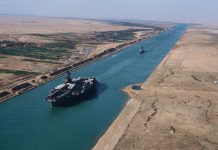
AP Moller – Maersk aims to assist its customers to decarbonise their supply chains with the launch of an Emissions Dashboard, an analytical data tool where customers are provided with carbon footprint measurements from their entire supply chain, giving a detailed emissions overview.
With an emissions overview companies will be able to disclose emissions information to the public, covering all their container flows, whether their products are transported via truck, train, plane, or vessel, according to a statement.
“As our customers trust Maersk with a wider part of their supply chains, they also expect from us that we assist their climate actions through sustainable end-to-end offerings,” said Vincent Clerc, CEO of ocean & logistics at AP Moller – Maersk, and went on to add, “The Emissions Dashboard will ensure full visibility for our customers to leverage on their journeys towards decarbonised supply chains.”
 Designed as a one-stop-shop, the Emissions Dashboard conforms to the Global Logistics Emissions Council (GLEC), a methodology to calculate emissions, and it handles emissions data from all carriers involved in the end-to-end supply chain.
Designed as a one-stop-shop, the Emissions Dashboard conforms to the Global Logistics Emissions Council (GLEC), a methodology to calculate emissions, and it handles emissions data from all carriers involved in the end-to-end supply chain.
Maersk explains that the analytics provide customers with the opportunity to get a detailed overview of their opportunities to lower emissions from the transport of their products, while at the same time the data create a solid basis for logistics emissions reporting which can be used in corporate sustainability reports.
“Around half of Maersk’s 200 largest customers have set – or are in the process of setting – ambitious science-based or zero carbon targets for their supply chains,” pointed out the company, which noted that the new emissions tool is available to all larger Maersk customers.





